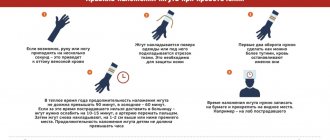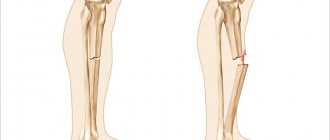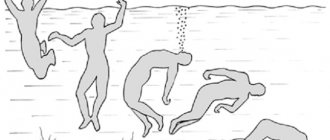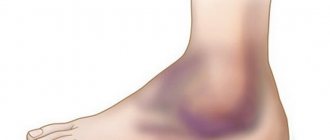Drowning
Pukhnarevich Svetlana Anatolyevna Doctor - anesthesiologist - resuscitator, ICU No. 1
Drowning is a fairly common cause of death and is the third leading cause of death from unintentional injuries in the world. Drowning in water is especially common in spring and summer, with the beginning of the swimming season.
This condition does not always end in death. Timely medical assistance in case of drowning helps save a person’s life. You just need to know what to do. First aid for drowning is a series of simple steps that even children should know.
Drowning – asphyxia by liquid
Drowning is a pathological condition or death of a person that develops due to the inability to breathe, since the respiratory organs are closed by water. This process is complex, but very little time passes from the moment it gets into the water to death. And if emergency assistance in case of drowning is not provided in time, the person will die. In order for death to occur, it is not at all necessary for a person to fall into great depth. Drowning can only occur when the head is submerged in liquid. This happens in accidents when a person, intoxicated or unconscious, falls face first into a puddle or a nearby container of liquid.
Drowning in water and other liquids
Most often, drowning of a person occurs in water, but sometimes situations can occur when asphyxia occurs with some other liquids. Most often these are industrial accidents. Drowning in water has its own characteristics, depending on the composition of the water. It has been observed that drowning in fresh water has some distinctive features from drowning in salt water. These data are of great importance in establishing the mechanism and cause of death, which is very important if there is a suspicion of the criminal nature of this case.
Drowning in fresh water
The ingress of water into the lungs leads to the fact that, due to the difference in osmotic pressure of ordinary water and blood plasma, the liquid is inevitably absorbed into the blood. The blood is diluted with water, and the total blood volume doubles. Due to the entry of water into the general bloodstream, hemolysis (destruction) of red blood cells occurs, followed by the release of hemoglobin. The doubling of blood volume creates a colossal load on the heart, which it is unable to withstand. A decrease in the concentration of red blood cells can lead to ventricular fibrillation. The membranes from red blood cells and free hemoglobin try to be removed by the kidneys - acute renal failure develops. Drowning in fresh water is also accompanied by irritation of the lung receptors, which provokes abundant formation of foam, which only accelerates the onset of asphyxia.
Drowning in salt water
The electrolyte composition of sea water differs significantly from the electrolyte composition of human blood. The concentration of salts in seawater is much higher. According to the law of osmosis, when salty sea water enters the lungs, the liquid part of the blood is “pulled” from the blood vessels into the lung. This mechanism is directly opposite to that of drowning in fresh water. Pulmonary edema develops, and the formation of persistent foam in the respiratory tract is also characteristic. Death occurs from cardiac arrest, which develops as a result of oxygen deficiency resulting from blood thickening. It is believed that in salt water, drowning of a person occurs a little slower, which is caused by the increased buoyancy of the body in sea water. It is also noted that it takes approximately 8 minutes for cardiac arrest to develop from anoxia (lack of oxygen), which develops as a result of blood thickening, whereas when drowning in fresh water, it takes 2-3 minutes to stop the heart from hemodilution (blood thinning). This knowledge will be useful when providing first aid in case of drowning.
Types of drowning
Drowning in water and liquids can occur in different ways. In connection with the differences discovered, the following types of drowning began to be distinguished:
- True, or “pale” drowning;
- Asphyxial or “blue” drowning;
- Syncopal drowning;
- Mixed type of drowning.
It is important to be able to differentiate types of drowning, since the volume and duration of first aid for drowning depends on knowledge of the mechanism by which the pathological process developed in the body.
True (aspiration, “wet”, “pale” drowning) True or “pale” drowning refers to the process when liquid (water) flows into the lungs and is absorbed into the blood, leading to hemodilution. It is noted that this type of drowning occurs more often in cases where the drowning person resisted the water elements for a long time. This type is called “pale” drowning due to the color of the skin of the drowned. The color of the skin during drowning according to this mechanism is very pale. And the term “wet” stuck because water is found in the internal organs. The lungs become large, heavy, and filled with fluid. Water is found in the stomach, intestines, and sinuses.
Asphyxial (spastic, “blue”, “dry”) Asphyxic type of drowning is the result of a spasm of the larynx, resulting from irritation of the receptors located in the respiratory tract by water. In this case, water in the lungs may not be detected at all or may flow in after death from asphyxia. For this reason, it is also called “dry”. In contrast to “pale” drowning, the skin color during drowning according to this mechanism has a bluish tint. Therefore, such drowning is also called “blue”.
Syncopal drowning (reflex) The onset of death due to vasospasm and reflex cardiac arrest is called syncopal drowning (syncopal reflex). Syncopal drowning can occur due to a person having heart or lung disease or an allergy to water. In this case, death occurs even before the onset of those changes caused by the filling of the respiratory tract with water. Therefore, changes in the blood and during examination of internal organs that are pathognomonic for drowning are not detected during syncopal drowning.
Mixed type of drowning With a mixed type, signs of both true and asphyxial types of drowning are found. Registered in 20% of cases.
Drowning mechanism
The processes occurring in the body due to the closure of the respiratory tract with water can occur in different ways. This depends on the composition of the water and the type of drowning. But, according to experts, the mechanism of drowning is similar in all cases and has a number of successive stages.
As soon as the body is immersed in water, breathing is reflexively held. The duration of this stage is different for each person and depends on the reserve capabilities of the body. After holding your breath, movements of the respiratory muscles occur involuntarily.
Stage of inspiratory dyspnea: Movements simulating inhalation predominate, during which water begins to actively enter the lungs. Irritation of receptors by water causes a cough reflex. At this moment, water, mixing with air in the lungs, forms foam characteristic of drowning.
Stage of expiratory dyspnea: Exhalation movements predominate. The pressure in the chest increases, the heart rate increases, and extrasystoles develop against the background of oxygen starvation of the heart muscle.
The stages of shortness of breath during inhalation and exhalation are a time of struggle when a person tries with all his might to escape. Losing consciousness from hypoxia can prevent this.
Stage of relative rest: At this moment, respiratory movements stop due to inhibition processes in the respiratory center, all muscle groups relax, and the drowned man’s body goes to the bottom.
Terminal breathing stage: The spinal control center of the respiratory center is activated, trying to somehow correct the situation. Irregular, sharp breathing movements appear. As a result of these movements, water penetrates even deeper into the lungs, tearing the alveoli and penetrating the blood vessels.
Final cessation of breathing: Final cessation of breathing is the result of extreme inhibition in the central nervous system.
Causes of drowning
The causes of drowning are varied, and to better understand why it happens, you just have to think about what situations force a person to be in close contact with water.
The main cause of drowning is an accident, which can be caused by various factors. Less commonly, drowning in water can be the result of a planned action by criminals. Natural disasters, such as flooding, can contribute to human drowning. In such situations, it is difficult to cope with water, even if you are a master of sports in swimming. Indirect causes of drowning, which are risk factors: Access to water: Naturally, in regions with a large number of bodies of water, drowning is much more common. Moreover, the cause of drowning is almost always neglect of simple rules of behavior on the water: swimming behind buoys, swimming in reservoirs with unknown depth and bottom topography, swimming while drunk, swimming in unfavorable climatic conditions, etc. Inability to swim: can be said to be the main cause of drowning. People who cannot swim should not be in the water at all without special devices that can keep them on the water (circle, vest). Swimming or being near water while intoxicated: Alcohol is the cause of many troubles in a person’s life. While intoxicated, a person is unable to assess the current situation, which often leads to dire consequences. Male gender: according to statistics, among all drowning people, men are more often registered. This is due to the hobbies of the stronger sex (fishing, diving, rafting, surfing, etc.), as well as the fact that men drink alcohol more often, are not afraid to swim alone, etc. Childhood: A huge percentage of childhood deaths from drowning occur between the ages of 1-14 years. Left unattended even for a couple of minutes, they become victims of the water element. Swimming in cold water: when cold water enters the respiratory tract, it irritates the receptors, causing spasm of the larynx and asphyxia. This is how the “dry” type of drowning develops. Swimming in cold water or accidentally entering ice water (for example, while ice fishing) can cause death from cramps in the limbs, making it difficult for a person to swim to shore. Being in cold water in combination with alcohol intoxication can especially quickly contribute to drowning. Health problems: Diseases do not disappear when a person is in water, and sometimes they can cause an accident. Drowning in water can be caused by heart attacks that occur while swimming, an epileptic attack, etc.
Signs of drowning
Signs of drowning are divided into external and internal. External signs are visible to the naked eye, but to detect internal signs it is necessary to examine the organs and tissues of the drowned person using special methods. This is necessary to confirm drowning as the cause of death. After all, finding a person in the water does not mean that he drowned. Types of drowning play an important role in the appearance of certain symptoms.
External signs of drowning: at the moment of the drowning process itself, the picture may be different. We are used to seeing on TV screens that a drowning person is actively waving his arms, floundering in the water and calling for help. But this doesn't always happen. Most often, this behavior of a drowning person is associated with panic that has gripped him. Moreover, during a cry, air leaves the lungs, which only accelerates the movement of the body towards the bottom. In most cases, filling the airways with water prevents sound from being made. You can suspect that a person is drowning by such signs as emerging from the water, taking deep breaths and diving back into the water. The eyes have a “glassy” look, the mouth is open. The color of the skin during drowning also attracts attention True and syncope types of drowning are characterized by pale skin with a bluish or pink-blue tint. Skin color during drowning is of the “dry” type: the skin becomes blue or dark blue. The presence of white or pink foam at the mouth and nose is a characteristic sign of drowning. This foam is formed as a result of mixing air with water while trying to breathe. Its peculiarity is its persistent nature, the foam is difficult to separate from the mucous membranes. When it dries, it leaves a characteristic fine-mesh gray mesh on the surface of the skin. Swelling of the mucous membranes : swelling of the conjunctiva, lips is noted, and sometimes puffiness of the entire face is noted. When removing a drowning person from the water alive, the following symptoms may occur: Cough; Vomit; Diarrhea ; Impaired consciousness , up to coma. Breathing problems , even stopping.
Internal signs of drowning: The body of a drowned person is subjected to careful examination. This is necessary to confirm drowning as the cause of death. The internal organs of a drowned person are examined using various methods. This includes a description of changes in internal organs discovered during the autopsy, as well as a number of studies carried out in special laboratories using a microscope and other technologies.
Compression fracture of the cervical spine: it often happens that a person who dives into water appears on the surface of the water already dead. The reason for this is a fracture of the cervical vertebrae, which occurs when jumping into water in shallow water or in an unknown body of water with a rocky bottom.
Drowning: types of help
There are different types of help for a drowning person. It is important to remember that a drowning person needs emergency drowning care. The entire drowning process lasts 6-8 minutes. If you do not have time to provide first aid in case of drowning, you can lose a person. Types of assistance for drowning:
- First aid for drowning (PMP for drowning);
- Medical assistance for drowning;
- Resuscitation for drowning.
First aid for drowning is the actions that should be taken by any person who is near a drowning person. The scope of emergency medical care for drowning includes: The first step is to remove the person from the water. To do this, it would be correct to swim up to him from behind, so that in a panic he does not grab the rescuer and pull him into the depths. You need to grab the drowning person by the hair or under the arms from the back and swim to the shore. On the shore, place the victim in a lateral position and examine the oral cavity. If there is sand, algae, debris, or vomit in the oral cavity, empty your mouth. Call an ambulance. You can press your finger on the root of the tongue, artificially inducing vomiting. This will clear the stomach fluid and the person will begin to come to his senses. Assess the presence of a pulse, heartbeat and the reaction of the pupils to light. If the victim shows no signs of life, immediately begin resuscitation in case of drowning.
Resuscitation for drowning includes cardiac massage through the chest (indirect) and artificial respiration at the stage of first aid for drowning. Upon arrival of doctors, the drowned person is taken to a medical facility, where, if necessary, resuscitation measures can be continued in a hospital setting in the intensive care unit. The person who rescued the drowning person must immediately begin resuscitation after freeing the oral cavity from possible contamination. Artificial respiration in combination with cardiac massage should be carried out until the arrival of an emergency vehicle or until the victim regains consciousness. Such activities should be carried out within 30 minutes.
Upon arrival of doctors, the victim is given a series of resuscitation measures aimed at restoring respiratory function (artificial ventilation) and emptying the stomach of fluid (gastric intubation). If clinical death is declared, doctors take measures to get out of this state: cardiopulmonary resuscitation, administration of adrenaline, etc. Even if a person has come to his senses after medical treatment for drowning and assures that everything is fine, he should not be allowed to go home. There is a high risk of developing “secondary drowning,” when death occurs some time after drowning and resuscitation of the drowning person. Therefore, he is taken to the hospital, where doctors treat complications of drowning (pulmonary edema, airway inflammation, electrolyte disturbances, acute renal failure).
Activities included in the scope of first aid for drowning may have their own nuances depending on the type of drowning. You need to know about this, because the right tactics of behavior will help you not to lose valuable minutes on which a person’s life depends.
First aid for drowning of aspiration type: provision of first aid for drowning, characterized by filling of the respiratory and digestive organs with water, boils down to the fact that after moving the drowned person to the shore and emptying the oral cavity, it is necessary to remove the liquid that has entered the body. To do this, just press on the root of the tongue and place the victim’s body with his stomach on his own knee. Push between the shoulder blades. This action should take no more than 15 seconds. Even if the liquid does not come out, there is no point in wasting time. We need to quickly switch to artificial respiration and cardiac massage. Resuscitation for this type of drowning does not have any special features; it is carried out according to well-known rules until the ambulance arrives.
Treatment of complications that arise in the long term. This is therapy aimed at preventing and treating pulmonary edema, restoring the rheological properties of blood (combat hemolysis), restoring the functions of the brain, kidneys, etc.
First aid for asphyxial type drowning: measures aimed at removing fluid from the body are not required, since in this type there may not be any. But you need to examine your mouth for the presence of foreign objects. After this, proceed to cardiopulmonary resuscitation according to general principles. Emergency care for drowning in a medical facility with “dry” drowning is carried out symptomatically and is aimed at restoring all body functions. The asphyxial type of drowning is considered somewhat more favorable in the sense that a successful result in providing emergency assistance for drowning is possible if the body was in the water for up to 8 minutes. Whereas with aspiration drowning this period is no more than 6 minutes.
First aid for reflex drowning: providing first aid for reflex drowning has the same principles as first aid for asphyxial drowning.
It is believed that first aid for drowning in the case of syncopal drowning can give a positive result, even if the victim’s body was in the water for about 12 minutes. And if the water was cold or icy, then due to the fact that metabolic processes in the cooled brain slow down, this period can be shifted to 20 minutes.
Dead sea water
7. Dead Sea
© michelangeloop/Getty Images
This sea received this name due to the fact that the salinity of the water practically deprived it of life. The sea is located between Israel and Jordan
and is popular among tourists.
Everyone knows that the water in this sea is so salty that it is impossible to drown in it. It’s true, it’s almost impossible to drown in it in the usual way, that is, to completely submerge under water.
The human body is held by the waters of the Dead Sea, so it is difficult to touch the bottom with your feet. However, if you decide to dive, it may end badly for you.
. Even swallowing just a few sips of water full of minerals and salts will upset your electrolyte balance and fill your body with toxins.
a long period of rehabilitation afterward
since internal organs suffer greatly from chemical burns and pneumonia.
In the most advanced cases, dialysis may be required.
How people drown
This is what a drowning person usually looks like
, according to Dr. Francesco A. Pia:
- in very rare cases, a drowning person is able to physiologically call for help. The first function of the respiratory system is breathing, speech is secondary. Therefore, in order to start speaking again, you first need to restore your breathing.
— the mouth of a drowning man either goes under the water, then appears above the surface again. However, when the mouth is above the water, it is not enough to exhale, inhale, and then call for help. When he emerges, he only has time to inhale and exhale, after which he immediately plunges under the water again.
- A drowning person cannot wave his arms to attract attention. He instinctively, trying to push off from the water, stretches his arms to the sides. These are precisely the movements thanks to which he floats to the surface and can take a breath.
- all because of the same instincts, a drowning person is unable to control his movements with his hands. A person who is trying to stay afloat is physiologically unable to “stop drowning” and make meaningful movements - head towards the rescuers, wave his arms or grab life-saving equipment.
- during the period of the instinctive reaction, the person remains in an upright position, while the legs do not show any sign of supporting movements. If the rescuer does not remove him from the water, then after staying on the surface for 20-60 seconds, the person will completely go under water.
Why is this happening?
When a child swims and dives, water can enter the respiratory tract through the mouth or nose. Then the vocal cords begin to spasm from inflammation, they swell and close after the child has already left the pool. Water in the lungs can cause swelling, which causes the airways to close, making breathing difficult or impossible. This is secondary drowning. But it happens that swelling and spasm occur without water getting in. This is called dry drowning.










